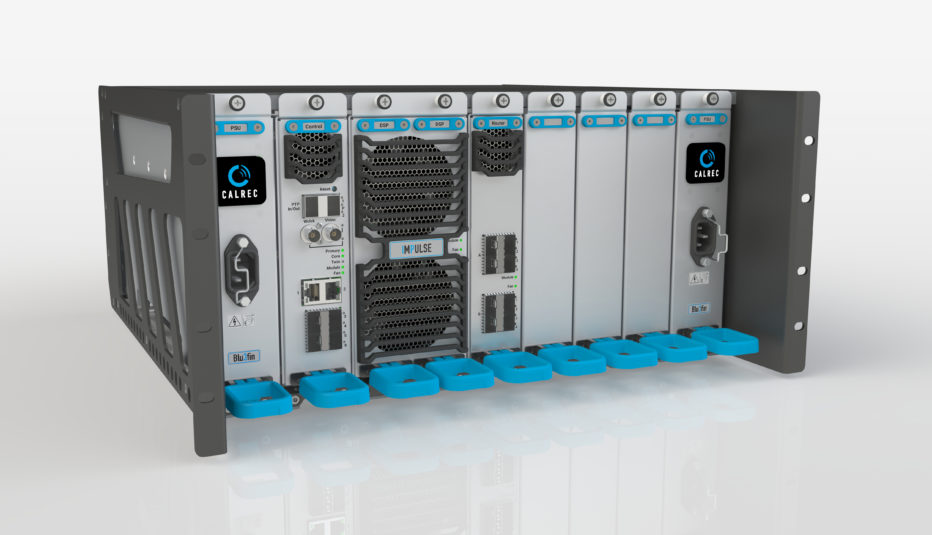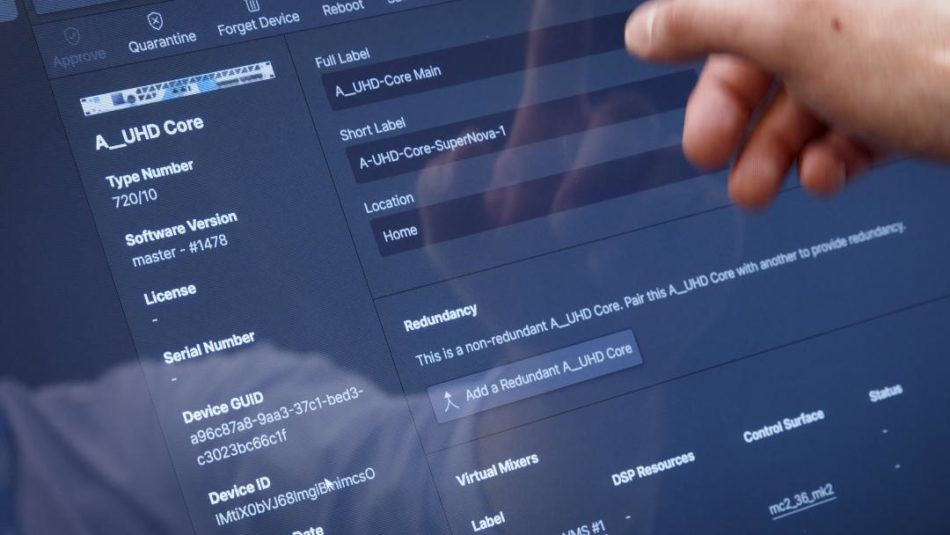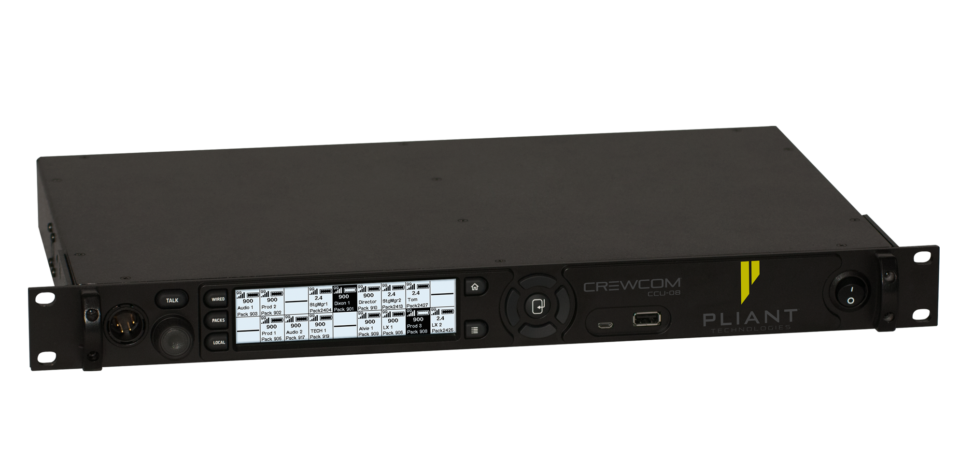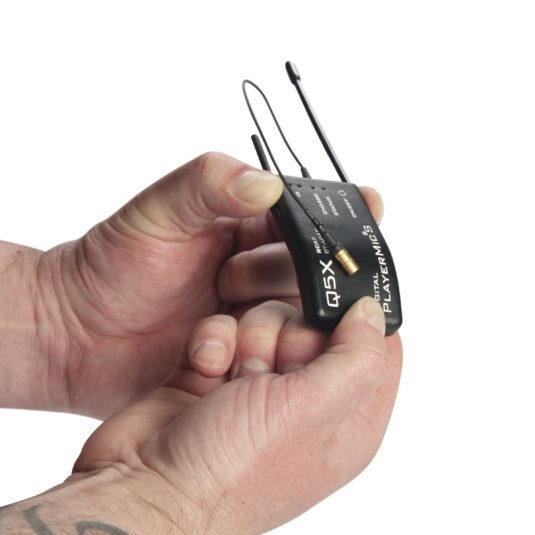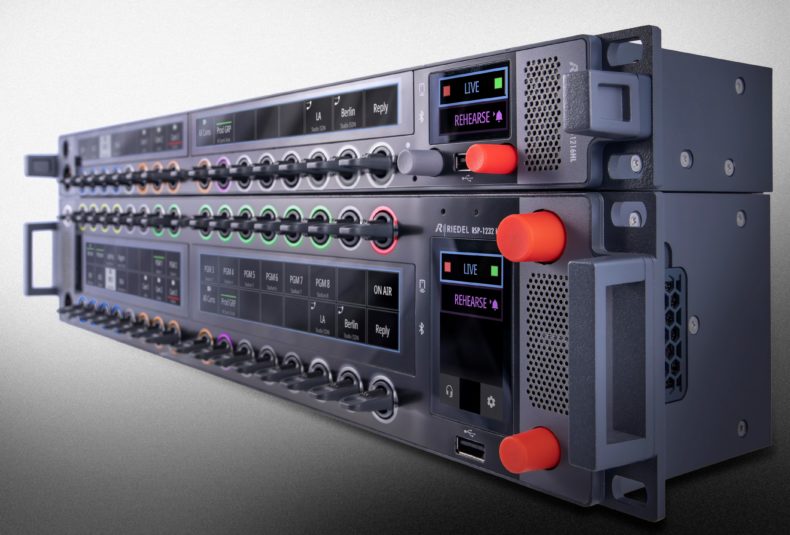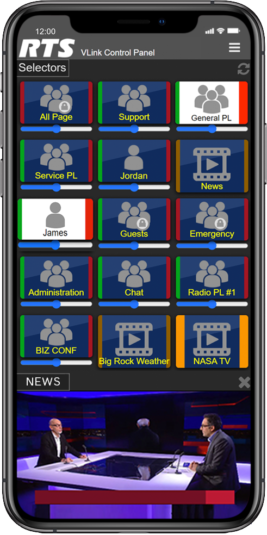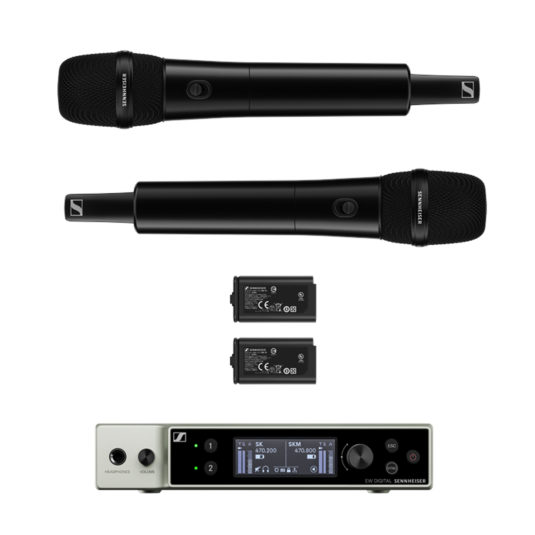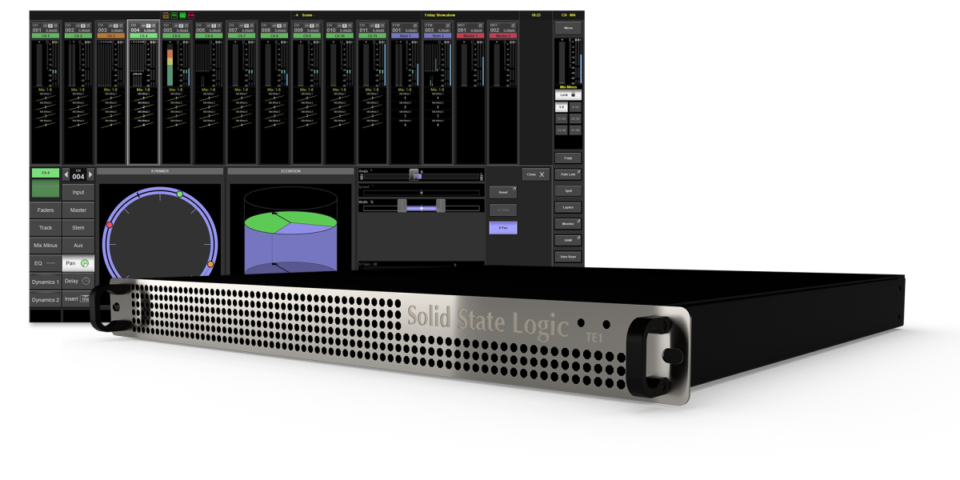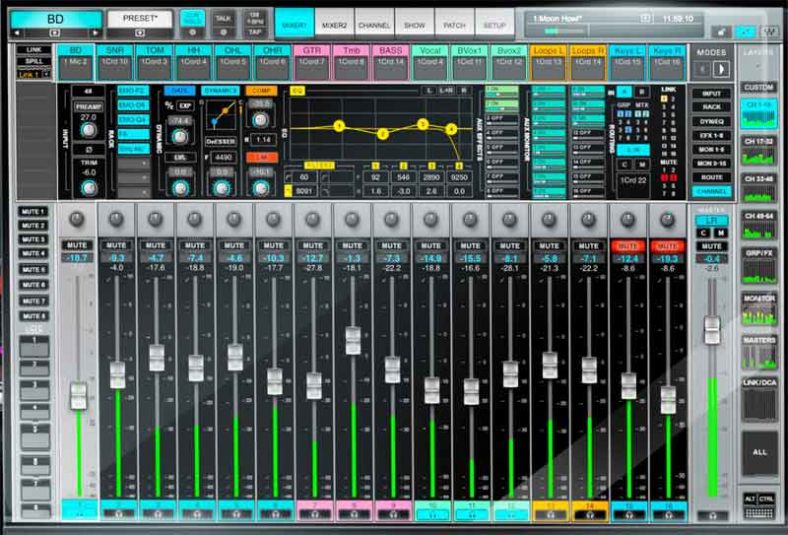IBC 2022: Audio Exhibitors To Focus on Remote Production, Standards-Driven Tech
Networking, integration, immersive audio are driving advances
Story Highlights
Over a tough 2½ years, the broadcast-audio community confronted a global pandemic with innovative solutions, such as artificial crowd noise and closer-than-ever SFX-capture for sports. At last, the folks who accomplished that are gathering once again, at the Amsterdam RAI Sept. 9-12 for the first IBC Show since 2019. Here’s an in-depth look at what attendees will get to see — and hear — from SVG audio sponsors at the show.
CALREC
Calrec (Hall 8, Stand B57) will highlight the power and flexibility of its ImPulse technology, running multiple independent consoles from a fully redundant pair of ImPulse IP cores, including physical control surfaces and headless consoles using Calrec Assist on a PC. ImPulse has native SMPTE 2110 connectivity and is compatible with the Calrec Assist web interface as well as the Apollo and Artemis consoles to provide a simple upgrade path for existing Calrec customers moving to an IP domain. It provides 3D immersive path widths and panning for next-generation audio with height and 3D pan controls, flexible panning, and downmixing built-in.
Calrec Assist is a browser-based interface that creates a virtual-console environment, allowing operators to mix directly from a computer or laptop. It’s compatible with a range of Calrec products to help broadcasters streamline workflows, improve cost-efficiency, and expand the variety of coverage.
Calrec’s flexible Type R console will sit on the same IP network, as will the Brio console, connected via an IP Gateway. The company’s Gateway boxes enable users on a Hydra2 network to merge onto an IP network to continue to get value from their original investment while tapping into the benefits of IP workflows.
On exhibit for the first time will be the Type R Talent Panel and GPIO Box. Type R mixing console is designed to allow customers to take advantage of distributed production and flexible workflows. Its integrated native-IP core provides virtual working practices and integration with station-automation systems like Ross Overdrive, Sony ELC, and Grass Valley Ignite. The new GPIO unit for Type R is a 1RU box delivering an additional 32 GPOs and 32 GPIs for interfacing with external systems, such as playout, phone systems, codecs, etc. Functionality can be added onto physical buttons on Type R fader panels, soft panels or web UIs and configured via Calrec’s user-friendly Connect application.
LAWO
Lawo (Hall 8, Stand B90) will show its new software version 10.4 for A__UHD Core and mc² consoles. Features include Signal Ownership Groups (allow users to arbitrate resources shared on a network); health-monitoring features centralized in HOME, with status displays of critical system errors, warnings, and notifications; and the new User List, which makes signal routing for mc² consoles in A__UHD Core systems more intuitive and flexible. In addition, with integration of Nova73 into HOME, operators now have the freedom to keep using their cores in a “hybrid” environment built around A__UHD Core and Nova73 systems. This integration allows existing users to migrate to the latest mc² console architecture at their own pace. Furthermore, following a successful JT-NM test in August, HOME is now officially NMOS IS-04 and IS-05 compatible, and DirectOut is about to join Merging Technologies as HOME-native supplier.
“One major development Lawo has identified is that immersive audio is about to go mainstream, as we predicted,” says Lucas Zwicker, senior technical product manager, audio production, Lawo. “Put on a backburner during the pandemic, it is now ready to take center stage: broadcaster Sky Germany decided to go immersive for all first-league Bundesliga soccer matches. Lawo will announce support of other immersive formats soon and already provides the possibility to tweak third-party NGA processor parameters right from an mc² console’s screen, i.e. directly from the sweet spot. A second trend — decentralized, distributed audio and video production — relies on redundant WAN connections over IP. Finally, the trend toward virtualization for geo-agnostic access to processing resources hosted in private-cloud data centers is actively supported by the MCX control software for mc² consoles, which can be virtualized alongside other services in the HOME management platform.”
PLIANT TECHNOLOGIES
Pliant Technologies (Hall 10, Stand C53) will be introducing new elements for both CrewCom and CrewCom CB2 systems. The new CCU-08 CrewCom control unit is the latest addition to the CrewCom system and gives users the ability to use up to eight 4-wire ports for larger-scale deployments while retaining all the features of the current companion CCU-22 and CCU-44 products. The CCU-08 control unit contains no radio and is frequency-agnostic, allowing it to control and monitor any device across CrewNet regardless of radio-frequency bands used. With the combination of CrewCom radio transceivers (RTs), a single CCU-08 supports up to 82 Radio Packs (RPs), 18 in Normal mode and 64 in the recently released High Density mode, across all RF bands. The latest update includes several enhancements; including faster configuration-file (CCF) upload speeds and a new Radio Pack paired list that allows the user to view and manage, from a single location, a list of all Radio Packs paired to each control unit.
The new High Density mode for both CrewCom and CrewCom CB2 wireless intercom systems is a selectable mode of operation that greatly increases user densities. For CrewCom, this new software-selectable High Density mode supports up to 32 RPs on a single radio transceiver while dynamically allowing any four of the RPs to communicate in full-duplex across four available talk paths. For CB2, High Density mode supports up to 16 RPs on a single BaseStation. In addition, users of both systems will have the flexibility to simultaneously deploy Normal-mode–enabled RPs and RTs (synced BaseStations for CB2) along with High Density-mode–enabled hardware, providing adaptability for application-specific setups.
“Users are no longer happy digging into a bin of headsets; they now want their own,” says Gary Rosen, VP, global sales, Pliant. “In the past, people would just go over and whisper in someone’s ear. Now wireless intercom allows you to whisper in someone’s ear from 100 ft. away.”
Q5X
Since IBC 2019, Q5X (Hall 8, Stand B47) has released encrypted, Axient Digital versions of all Q5X wireless transmitters. These are fully compatible with Shure Axient Digital receivers, including the new ADX5D mobile receiver. These digital transmitters share the same form factor as the Q5X analog transmitters, which have long dominated the market of on-player audio capture and are compatible with Shure, Sennheiser, Wisycom, and Lectrosonics receivers. The NBA was the first to deploy the encrypted Digital CoachMic transmitter, which is worn by both coaches and referees during all broadcasts. The CoachMic features a robust, integrated, rocker-style mute switch and easy-to-see LED mute indicator, allowing users to easily mute audio for sensitive conversations. The PlayerMic, known for its flexible rubber packaging and thin profile, and the waterproof AquaMic, with 16-hour battery life, also are available with Axient Digital technology. All Q5X transmitters are 100% remotely controlled via the RCAS MicCommander handheld controller. Analog and digital transmitters can share the same 2.4-GHz RCAS control network for ease of operation. Larger, multiple-transmitter implementations can be controlled with the new Q5X MicControl software on the RCAS control network, which can also control Shure rack-mounted Axient Digital receivers and Sennheiser EM 3732 analog receivers.
“The use of player audio during broadcasts increased significantly during the COVID-19 period and continues to grow in popularity with both broadcasters and fans,” says Q5X CEO Paul Johnson.
RIEDEL
Riedel (Hall 10, Stand A31), known for state-of-the-art comms, will showcase how its innovative engineering is influencing video, audio, and data distribution. MediorNet IP further enhances Riedel’s distributed-network approach to video distribution using TDM and fiber by adding standardized IP solutions to its collection. At the heart of the MediorNet IP solution is the flexible, small-form-factor MuoN SFP technology, offering a variety of processing, such as encoding/decoding, up/down/crossconversion, ST 2110 gateways, and multiviewers.
On the comms side, Riedel’s wired and wireless Artist, Director and Bolero intercom solutions offer new features and innovations complementing their durability, reliability and clarity. The company will also highlight the newly developed Audio Monitoring App, designed to allow users of 1200 Series SmartPanels to easily monitor their audio, for confidence and quality, while performing typical intercom workflows. Users can select up to 16 stereo AES67 channels in parallel from a total of 256 and swiftly organize them within the app’s intuitive browser-based configuration tool. Because the Audio Monitoring App takes its sources directly from the ST 2110 (AES67) network, users gain flexibility in selecting monitoring sources while saving ports on their matrix.
“These new workflow tools, such as distributed routing for audio and video, as well as wireless communications, are being used in an increasing number of productions, including sports,” says Joyce Bente, President/CEO, Americas, Riedel. “At IBC, we are hoping to share stories of changing and advancing workflows using our technology with our friends and clients to better their production experiences. Plus, this is our first IBC since we have acquired Embrionix, and we are excited about showing off the unique solutions enabled by the MediorNet IP video line they have provided us.”
RTS
“Our focus areas for the show include state-of-the-art solutions for multi-site and on-the-go productions, making the most cost-effective transition to IP, and our range of SMPTE ST 2110-ready options,” says Guy Low, Senior Creative Manager, RTS (Hall 10, Stand B48).
New at the show will be three flexible-redundancy options for multi-frame ODIN digital intercom matrix systems: the Backup and Restore function in RTS AZedit software can be used to upload and save the complete configuration of an ODIN frame to a file; Frame Swap is used to replace a single frame in a multi-frame ODIN intercom system; and Redundant Frame Operation. In addition, new VLink Lite compact, cost-effective version of VLink runs on virtually any iOS or Android device and scales to 8PLs and 64 users. Attendees can also expect to see more SMPTE ST 2110-ready options, including channel-by-channel selectivity (users can choose if a channel speaks 2110, OMNEO, Dante, etc.); backwards compatibility (users can add 2110 capability with a simple upgrade to existing equipment; and simplified native implementation (Dante Domain Manager no longer required).
SENNHEISER
For Sennheiser (Hall 8, Stand D50), IBC 2022 will be a bit special: this year, the company announced the refocusing of its activities in the B2B sector. Its three brands — Sennheiser, Neumann, and Dear Reality — will exhibit their latest tools for sound recording, mixing, and monitoring: the immersive AMBEO 2-channel spatial audio rendering, the next Sennheiser EW-DX wireless system, the Neumann KH 150 monitoring systems, and the new Neumann NDH 30 open-studio headphones.
The new EW-DX range offers several new options: two- and four-channel receivers, handheld microphones, bodypack and tabletop transmitters, a maximum-switchable bandwidth of 88 MHz, AES 256 encryption, or e-ink display. Also being exhibited: the Evolution Wireless G4 microphones and AVX camera microphones; Digital 6000 series, including Wireless Systems Manager software; the EK 6042 analog/digital camera receiver and several lavalier microphones and headset microphones. Of course, MKH shotgun microphones — MKH 416, MKH 8060, and MKH 8070 models — will be on hand. On the monitoring side, visitors will be able to wear the NDH 20 headphones (new edition: black) and the new Neumann NDH 30 open-studio headphones. Also, the brand-new Neumann KH 150 AES67-compatible studio monitor is ideal for broadcasters’ AES67 streams.
SOLID STATE LOGIC
Solid State Logic (Hall 8, Stand D68) will present the latest workflow advances to System T for on-premises and remote audio production.
Decentralized and distributed remote audio production: SSL’s System T and Network I/O comprise I/O, signal-processing, and control software distributed across networked devices and computers. System T software can run on control surfaces, SSL rackmount controllers, COTS computer hardware, or virtual machines. System T control software is a set of applications, rather than a single app; inter-app communication is also performed using standard network data. Physical console surfaces or software instances running on user computing hardware can remotely control the console at a facility via a VPN. All control positions feature the same GUI design for a unified user experience.
Scalable DSP: The latest System T TE1 and TE2 Tempest Engines feature scalable Pay-As-You-Go DSP licensing, offering a variety of channel-path capacities that align with a broad range of applications and budgets. Software licenses for five processing packs are available, defined by the total number of mono All-Paths–equivalent channels supported, from 85 to 800. These are available to users as perpetual or short-term, time-based rental upgrades.
Immersive and NGA Workflows: System T’s architecture provides processing for multiple audio formats for immersive and three-dimensional, channel-based objects, Ambisonics, and binaural audio, with support for multiple standards and formats, including ATSC 3.0, Dolby Atmos, and MPEG-H. A Sennheiser AMBEO partnership adds on-board conversion support for the AMBEO VR Mic, with a 360 transcoder to render to a wide range of multichannel outputs from 4.0 to 7.1.4.
TELOS ALLIANCE
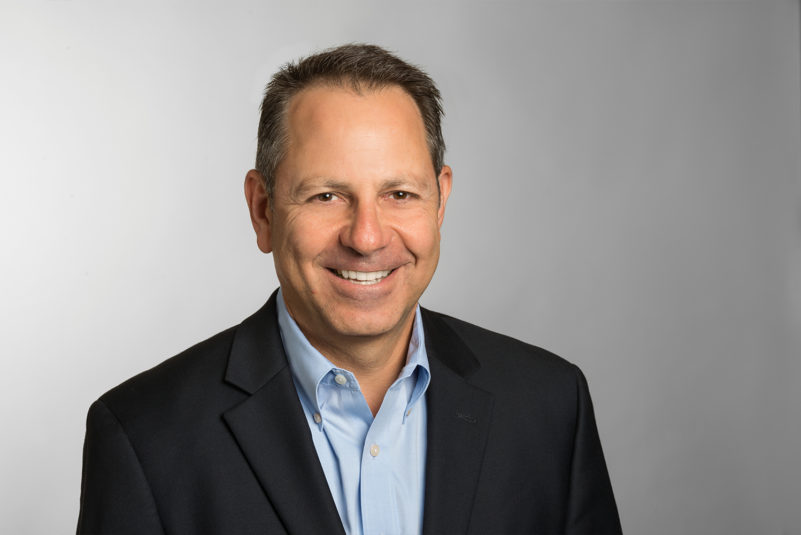
Telos Alliance’s Marty Sacks: “New solutions further enhance how customers are served by the company’s sales and service departments.”
Telos Alliance (Hall 8, Stand A44) will exhibit for the first time in two years with a focus on solutions and direct, consultative engagements with customers. According to Marty Sacks, EVP, sales, marketing, and strategy, Telos Alliance, the emphasis is on the company’s continued work across a wide range of file-based and real-time media workflows, including virtualization, with an eye and ear on new products currently under development.
“Telos Alliance’s new solutions focus coincides with upcoming announcements that further enhance how customers are served by the company’s sales and service departments,” says Sacks. “We’re committed to providing our customers with exceptional services well beyond the traditional pre- and post-sales support that we are known for.”
The Telos Alliance stand will feature a team of audio and broadcast experts ready to actively collaborate with visitors on projects and concepts along with providing unique insights on how hardware, software, or a hybrid combination allows them to enhance capabilities or solve problems in their facilities.
“It’s less about specific products and more about problem-solving that can only come from a deep understanding of our client’s environment and goals,” Sacks says.
TSL
TSL (Hall 10, Stand B41) will showcase its portfolio of audio solutions, from its MPA1 line to its SAM-Q and PAM offerings, with audio-monitoring options that will fit various workflows and budgets. The SAM-Q-NET audio monitor is the company’s latest audio product and introduces native support for ST 2110-30 and ST 2022-7 and multiple control options, including NMOS. One of the benefits of SAM-Q-NET is that the onboard redundant 1G Ethernet connectivity vastly reduces the cost of deployment for audio-specific installations. SAM-Q-NET is equipped with both in-band and out-of-band control options, including NMOS support and a TSL RESTful API, maximizing the number of control systems that the unit can be integrated with.
The MPA1 range offers quick and simple operation for 3G/HD/SD-SDI, Dante, MADI, AES3, and analog audio interfaces, and each model is offered in both SOLO and MIX variants. The range also offers a built-in web server, providing the ability to manage channel names and system parameters remotely over an IP network, view audio levels, signal status, and format via a user-friendly web GUI. TSL will also showcase its PAM-IP range at IBC.
“TSL can provide an audio-monitoring solution to fit within any environment and to suit anyone, from operator to engineer,” says Berny Carpenter, audio product manager, TSL. “We look forward to showcasing the complete TSL Audio offering at IBC, including the simple-to-use MPA1 range, the SAM-Q line with our new SAM-Q-NET, and the top-of-the-line PAM-IPs.”
WAVES
At IBC 2022, Waves (Hall 9, GV Media Alliance area) joins the Grass Valley Media Alliance, a group of media organizations dedicated to providing fully tested, integrated solutions that enable the industry to create innovative, high-performing media workflows running on-premises or in the cloud. As part of the GV Media Alliance, Waves’ Cloud MX audio mixer can now connect with Grass Valley’s AMPP system and provide state-of-the-art audio-mixing and -processing abilities injected into the AMPP’s workflow, delivering stellar audio quality to any cloud-based live broadcast production.
“We are excited to show advanced features of the Waves Cloud MX audio mixer released earlier this year and now compatible with Grass Valley AMPP,” says Greg Kopchinski, live and install product manager, Waves. “During 2022, we have spoken with many broadcasters that are now migrating from on-premises, REMI, or hybrid models to full cloud production workflows. At IBC, we will further demonstrate how they can now include Grammy Award-winning audio processing in their program delivery and distribution.”
